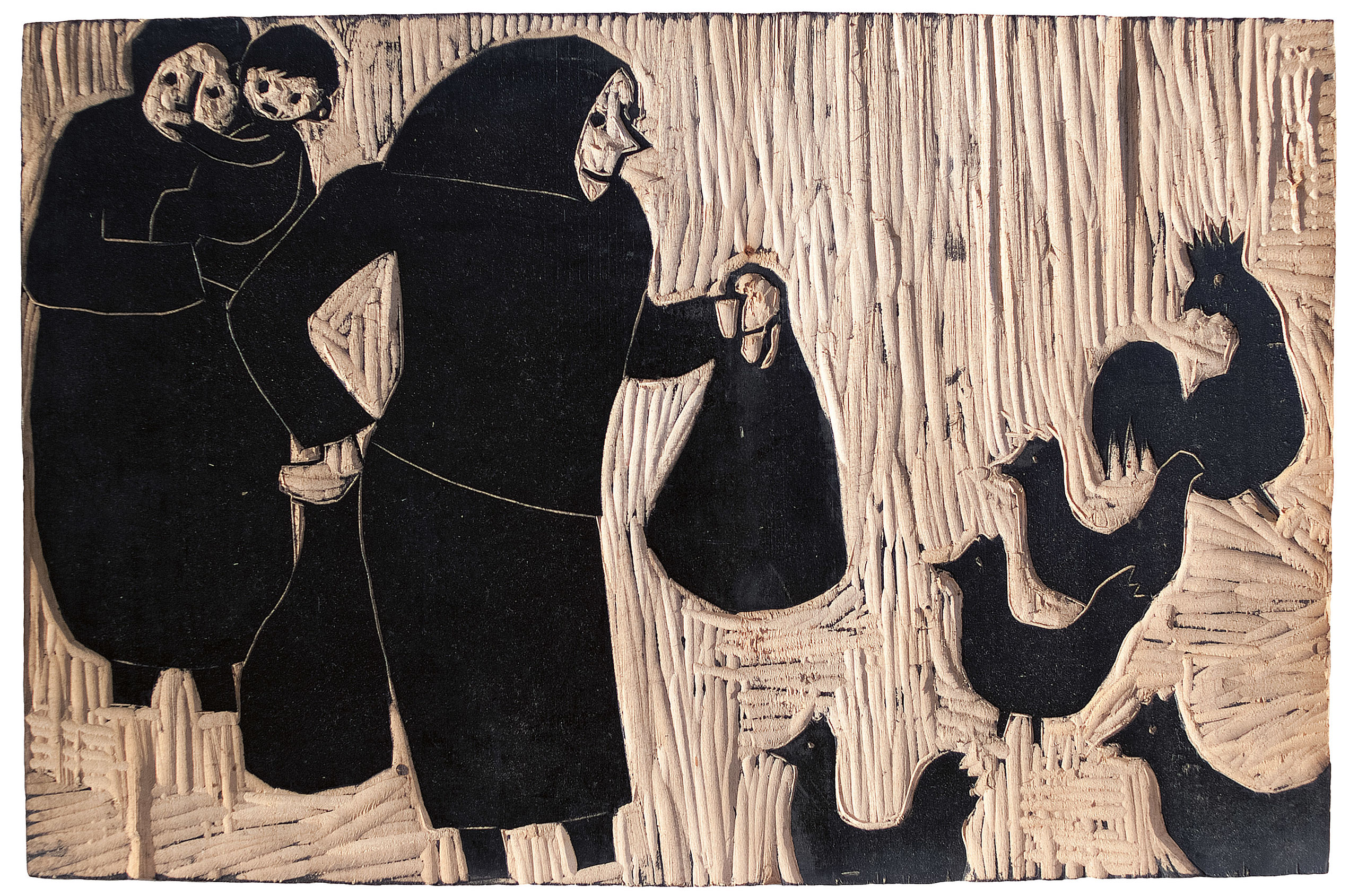Woodcut Printing Blocks and Preliminary Drawings

For his woodcuts, Werner Berg usually used linden or spruce wood. While linden’s finer grain made it possible to produce very precise lines and uniformly black surfaces, spruce, a softer and rougher wood, produced jagged edges along the lines carved into it. The artist was also able accent the spruce wood’s rougher grain intentionally as a compositional device.
Generally Berg drew on the woodblock using charcoal followed by pen and ink over it. Then he painted the block with blue-gray tempera so that during the carving process the lines and surfaces carved into it stood out from a dark surface, as they would in the final print.
With time, the repeated “rubbing” of the wood block during the hand printing process often rounded the carving’s edges and pressed down protruding elements, particularly when a softer wood was used. With spruce, the wood’s grain tended to gum up after repeated applications of ink. Thus the artist was only able to produce a few prints from each block. Often Berg recarved the block between printings, and thus the individual prints are not identical. The individual print has more the character of a “monotype” – an original produced by the artist’s hand – than of a mechanical reproduction made using a printing press. With the early woodcuts, the number of prints was generally six, in many cases only two or three. From the mid-sixties onward there are generally twelve prints from each woodcut.